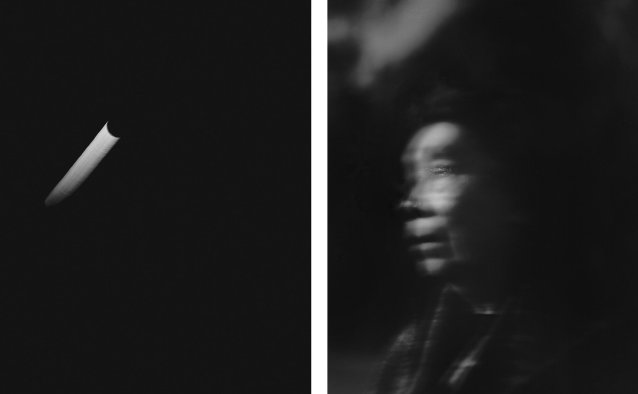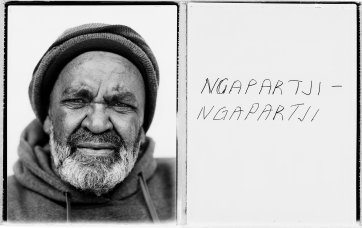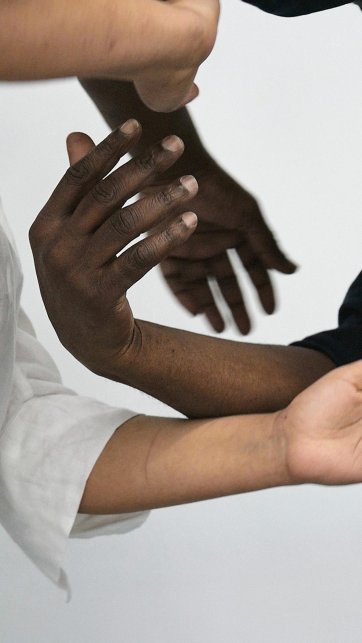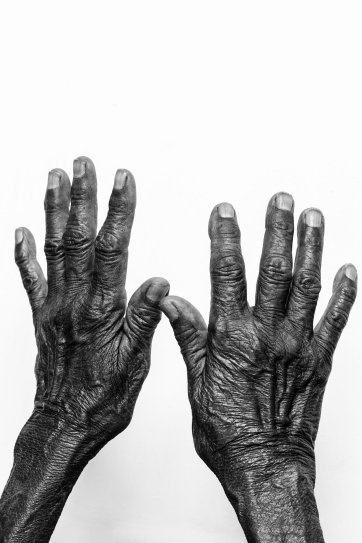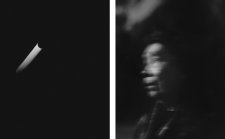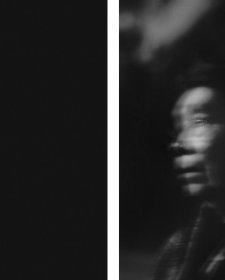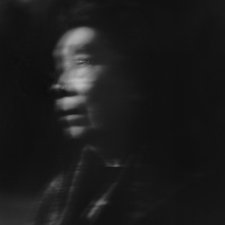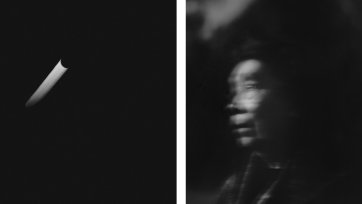Let’s take a look at the National Photographic Portrait Prize for 2024! This year, the three judges – Isobel Parker Philip (Director, Curatorial and Collection, National Portrait Gallery), José da Silva (Director, UNSW Galleries) and Pippa Milne (Curator, PHOTO Australia) – selected 34 portraits from over 1800 entries. The works they chose show the different ways photographic portraits can tell stories, challenge stereotypes, look at identity and expand the ways we think about ourselves, each other, and the world we live in.
The winner
Amos Gebhardt’s evocative portrait Alexis with moon won this year’s prize. The two-part image, or diptych, shows award-winning Waanyi author Alexis Wright lit only by moonlight. By pairing the moon with the sitter, Amos wanted to honour Alexis as a luminous literary figure. To create the portrait at night with only the light of the moon, Amos used a large-format camera and kept the lens open for eight minutes to let enough light seep in. If you look carefully, you can see the moon reflected in Alexis’ eye.
Who are you hanging with?
Some of the photographs were hung close to each other because they have something in common. This can suggest a theme. Choose three works that you feel work together. What is their point of connection?
Activities for students or family groups
For the photograph Ngapartji-Ngapartji, Tobias Titz worked with Aboriginal Elder Robert Fielding. Tobias took a Polaroid photo of Robert, then invited him to write on a second Polaroid. Robert wrote the Yankunytjatara words Ngapartji-Ngapartji, which mean to give to one another, to share. Draw a portrait of someone important to you, then give it to them to add to it in some way.
The arms and hands in the photograph (indistinct chatter) 3 by Arini Byng look like they are talking. This photograph captures an improvised duet between the artist and her father Travis Byng. Working in pairs, copy the gestures together and create a conversation!
Look carefully at the people in the portrait Mikayla with her brothers by Zoe Helene Karouzos. What does their body language and expression say about them? Find other portraits that have interesting poses and/or expressions. How would you pose for your portrait?
1 Ngapartji–Ngapartji, 2023 Tobias Titz, Robert Fielding. 2 (indistinct chatter) 3, 2023 Arini Byng. 3 Mikayla with her brothers, 2023 Zoe Helene Karouzos.
Drawing activities – pencil and paper
In Nyangatja Ngayuku Mara (These are my hands), Rhett Hammerton represents Pitjantjatjara artist and Ngangkari (traditional healer) Maringka Burton’s story and culture through her hands. Find other portraits where hands are important. What are they doing? What are they communicating? Now trace around your hands on a piece of paper with textas or pencils. Create patterns by overlapping your hands.
Up for a challenge? Choose a portrait and try to draw it without taking your pencil off the page. Want even more of a challenge? Put your pencil in your non-dominant hand and do it again.
1 Nyangatja Ngayuku Mara (These are my hands), 2023 Rhett Hammerton. 2 We Were Just Little Boys, 2023 Tace Stevens.
For older students and groups
Artists have used two very interesting 19th-century photographic techniques in this year’s prize. First Nations artist Brenda L Croft’s image of important Aboriginal Elder Jim Everett is based on a tintype, and Sammaneh Pourshafighi’s self portrait is a cyanotype. Research these techniques and read the exhibition labels to discover why the artists used them. Then have a go at making your own cyanotype! You can find a range of cyanotype kits online to explore this process. Alternatively, if you don’t have access to cyanotype paper, you can experiment with light and place objects that represent you on a piece of paper and draw around them and/or their shadow.
1 blood/memory: Brenda & Christopher I (Gurindji/Malngin/Mudburra; Mara/Ngarrindjeri/Ritharrngu; Anglo-Australian/Chinese/German/Irish/Scottish) 2021, 2022 Brenda L Croft, Prue Hazelgrove (Photographic Assistant). 2 A million moons: Self-portrait as an Iranian woman, 2023 Sammaneh Pourshafighi.
The portrait witness by wani toaishara celebrates his mother-in-law, who plays an important role helping refugee families settle into a new country. Working in pairs, discuss what community and home mean for you, and what it would mean for newly arrived migrants. In what ways could you contribute to your community?
The portrait Fragility by Southern Kaantju/Umpila artist Naomi Hobson features the artist’s cousin Micky and a large beetle! Naomi says life is fragile and that she wanted to show how humans can live in harmony with nature. Discuss in a group how you would use art to campaign for an issue that’s important to you.
1 witness, 2023 wani toaishara. 2 Fragility, 2024 Naomi Hobson.
Works in the National Photographic Portrait Prize explore different types of relationships: family, community and intimacy. Working in pairs, find a photograph for one of these themes and write 100 words to describe what makes the portrait effective.
